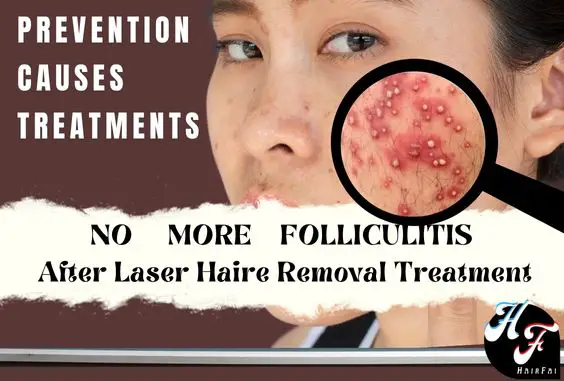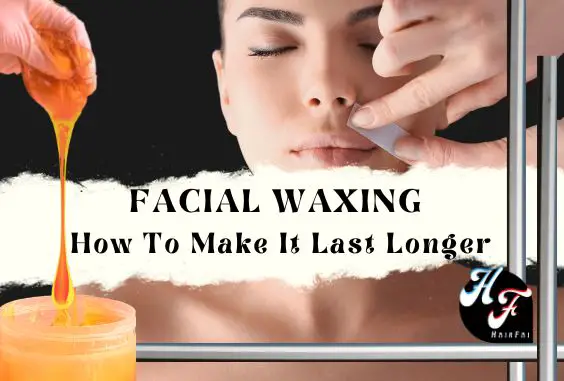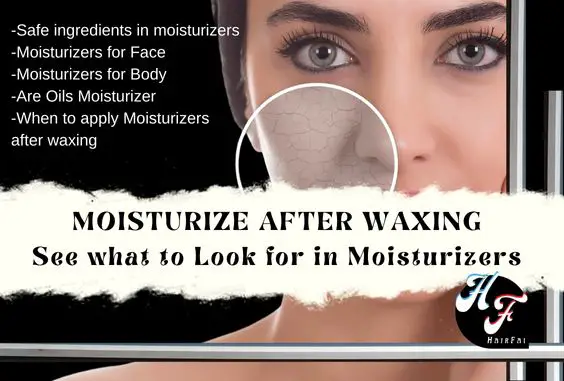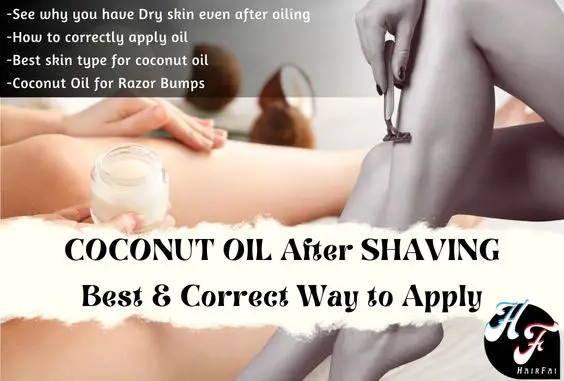Allergic & Histamine Reaction to Waxing -Treat & Prevent
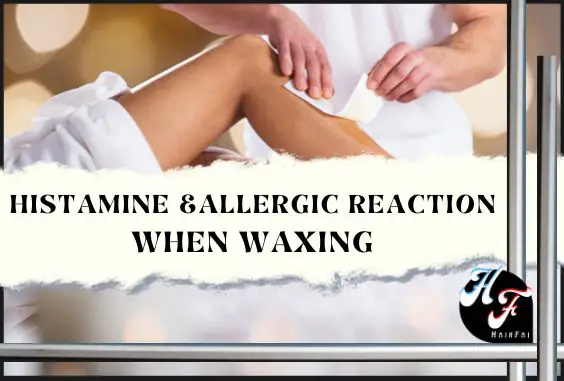
Allergic and Histamine reactions to waxing are sometimes a common occurrence. It does not always occur but when it does, it might look different for different people.
So in this article, we are going to guide you on How to spot a reaction and How you can treat and also Prevent them from occurring.
Difference Between Allergic Vs Histamine Reactions From Waxing
A Histamine Reaction is different from an allergic reaction in that a histamine reaction can occur without an allergen.
A histamine reaction could happen in response to:
- An allergy to a substance used during waxing,
- Or sometimes it is just your body reacting to the stress of waxing the hair off.
Histamines are Compounds from our immune system that increase blood flow to sensitive areas when the skin is harmed by injury, allergies, or infection. They are usually meant to protect us by getting rid of potentially harmful substances.
Related Article: Itchy After Waxing: Causes, Prevention & How to Treat it
How Do Waxing Cause Histamine Reactions
Waxing can induce a histamine reaction since it is a superficial injury and/or the product used can be an allergic trigger. Both of these traumas to the skin usually lead to inflammation.
Both a surface-level injury and/or an allergen can cause the body’s immune system to come to the rescue armed with histamine!
Though it is normal for the skin to be slightly inflamed for a little while after waxing, a strong histamine reaction should be treated immediately.
Allergic Reactions to Waxing
Every person’s allergies are brought on by various things in varying quantities, hence there is no one clear reason for allergies.
It all actually depends on how your skin has responded to the waxing procedure.
What Causes Allergic Reactions From Waxing
Different individuals have different allergens (cause of allergic reaction) but some of the most common things to cause a reaction whilst waxing are:
- Waxes such as Beeswax
- The type of oil used.
- Heavily scented or tinted products
Hair Removal Related Articles
Folliculitis After Laser Hair Removal -Treated & Explained
Coconut Oil After Shaving – Benefits & How to Use Correctly
Deodorant After Laser Hair Removal – Potential Dangers and Risks
Deodorant After Waxing – Possible Dangers
What to Do After Waxing Underarms- Aftercare Guide & Tips
Benefits & Disadvantages of Waxing Underarm Vs Other Methods
What to know before Threading -Disadvantages & Benefits Of Threading Hair
Folliculitis After Waxing- How To Treat & Prevent
Does Eyebrow Threading Hurt- How To Prep & What To Expect
Pimples & Bumps After Threading- How to Treat & Prevent
Threading Hair Aftercare- What to Do & Apply to Soothe Skin
Does Face Waxing Cause Acne, Bumps, & Larger Pores
Eyebrow Laser Hair Removal- Risk, Precare, Aftercare & Cost
Wrinkles, Loose & Saggy Skin After Facial Wax- Actual Truth
Disadvantages & Benefits of Waxing – What You Need to Know
How to Spot a Histamine or Allergic Reaction To Waxing
Allergic reactions are a type of histamine reaction so the symptoms will be very similar. A bad reaction to waxing could show as:
- Redness that lasts for a while.
- Extended swelling of the area
- Hives
- Sneezing – triggered by the allergens
- Bumps that are red at the waxed site
The severity of the histamine reaction will depend on how much histamine your body releases in response. This varies from person to person as each immune system is very different.
How Long Will A Histamine or Allergic Reaction To Waxing Last
A histamine reaction to waxing should not last more than 24-48 hours.
Immediately after waxing, some normal side effects occur like:
- Redness
- A little swelling
- Mild irritation and bumps
All of these usually resolve or begin to get better as you apply after wax treatments like your soothing lotions.
However, a histamine reaction will persist hours after waxing, may worsen before it gets betters, and ultimately last for up to 48 hours, even with treatment.
How To Treat A Histamine Or Allergic Reaction To Waxing
If you have an allergic or histamine reaction to waxing, here is what you can do:
- Use a cold compress on the area for 15 minutes at a time, periodically through the day (every 2-4 hours)
- Wear loose clothing – which allows your skin to heal faster and better.
- Avoid strenuous activity or anything that will make you sweat
- If you are sneezing or having congestion or a runny nose, you may use OTC Benadryl as directed by a pharmacist or as directed on the box.
- You may apply a thin layer of antihistamine cream or ointment or a hydrocortisone cream or ointment over the areas of affected skin
- Keep your skin clean and avoid scratching and picking
When To Get Medical Help From a Waxing Reaction
If the usual symptoms persist longer than 48 hours, become unbearable, or you start to experience other systemic symptoms, you should be seen by a doctor or dermatologist for more aggressive treatment.
If you experience the following additional symptoms, seek medical attention right away:
- Dizziness
- Lightheadedness or fainting
- Confusion or extreme anxiety
- Difficulty breathing (shortness of breath)
- Wheezing
- Chest Pain
- A fast heartbeat
- Cold and/or clammy skin
- Loss of Consciousness
These are signs that your body is going into anaphylactic shock which is the body’s extreme immune response to a trigger. This is a medical emergency.
How To Prevent Allergic & Histamine Reactions To Waxing
Even though we cannot definitely prevent allergic and histamine reactions, or really anticipate them, there are a few things we can do to help our skin react better:
- Do a patch test on your skin a few days before your waxing session to see how your skin will react
- Make sure that your skin is clean and well prepped before waxing
- Use a wax and other products that were designed for sensitive skin
- Keep your skin well moisturized and healthy before and after waxing
- After waxing, avoid products that are fragrant and tinted, like lotions, perfumes, deodorants, and makeup, for up to 24 hours.
- Let your skin rest and keep hydrated
- If you find that you are allergic to the wax or other products used in the process, try to avoid them in the future and always patch-test new products
- Avoid going out into the sun for at least 24 hours after waxing
- Use sunscreen for sensitive skin if you must go out and continue to apply sunscreen every day after waxing
Best Hypoallergenic Waxes For Sensitive Skin
1- KoulaWax Hard Wax
These hard wax beads from KoluaWax can be effective anywhere on the body.
But they’re specifically formulated to be thinner and stickier than usual to grip finer strands, so they’re especially well-suited for sparce and thin hair
The beads are made with beeswax and shea butter to pull out hairs without irritating the skin, and you only need a warmer and a spatula to apply.
Click here to check out the KoulaWax Hard Wax on Amazon.
2- GiGi Creme Wax For Extra Sensitive Skin
Gigi wax is great for those with sensitive skin. Since it melts at a lower temperature than traditional wax, which allows for a less painful application.
This also makes it perfect for removing hair on areas that are extra sensitive. And a thinner application helps to remove finer hair.
The wax seeps into the hair follicles to gently pull out the hair from the roots. It also contains titanium dioxide which acts as an anti-inflammatory agent to soothe your skin during waxing.
Click here to purchase the GiGi Creme Wax For Extra Sensitive Skin on Amazon.
3- Veet Leg & Body Hair Removal Kit- Sensitive Formula
Veet Wax Strip Kits are made with Easy-Gel Wax technology that will effectively remove unwanted hair. But it is infused with both acai and shea butter which helps to leave behind soft smooth skin.
These strips also exfoliate the skin and rapidly remove most of the hairs from their roots at first application.
They are ready-to-use cold wax strips that are great for waxing your legs and body. They are also dermatologist tested and suitable for sensitive skin.
Click here to check out the price for the Veet Leg & Body Hair Removal Kit on Amazon.
Related Articles
Painless Waxing-Use Numbing Cream, Spray & DIY Remedies
Best Oils To Use After Waxing- How To Apply & Benefits
Tweezing Vs Waxing- Which Is One Better
What to Apply After Waxing- Treat & Moisturize Dry Skin
Best Eyebrow Threading Machine- Pros, Cons & How to Use
Threading Vs Waxing Which Is Best For Face & Upper Lips
Threading Upper lip Hair- Cost, Pros & Cons, How to DIY
Waxing Upper Lip- Pros & Cons, Cost, How to DIY, Aftercare
Itchy After Waxing: Causes, Prevention & How to Treat it
What To Do After Face Waxing – Aftercare Tips & Guide
How Often Can You Do a Face Wax- Tips to Make it Last Longer
Eyebrow Waxing- Cost, Pros & Cons, Everything To Know
Sources:
Allergic Reactions To Waxing (What To Do & How to Prevent It)

